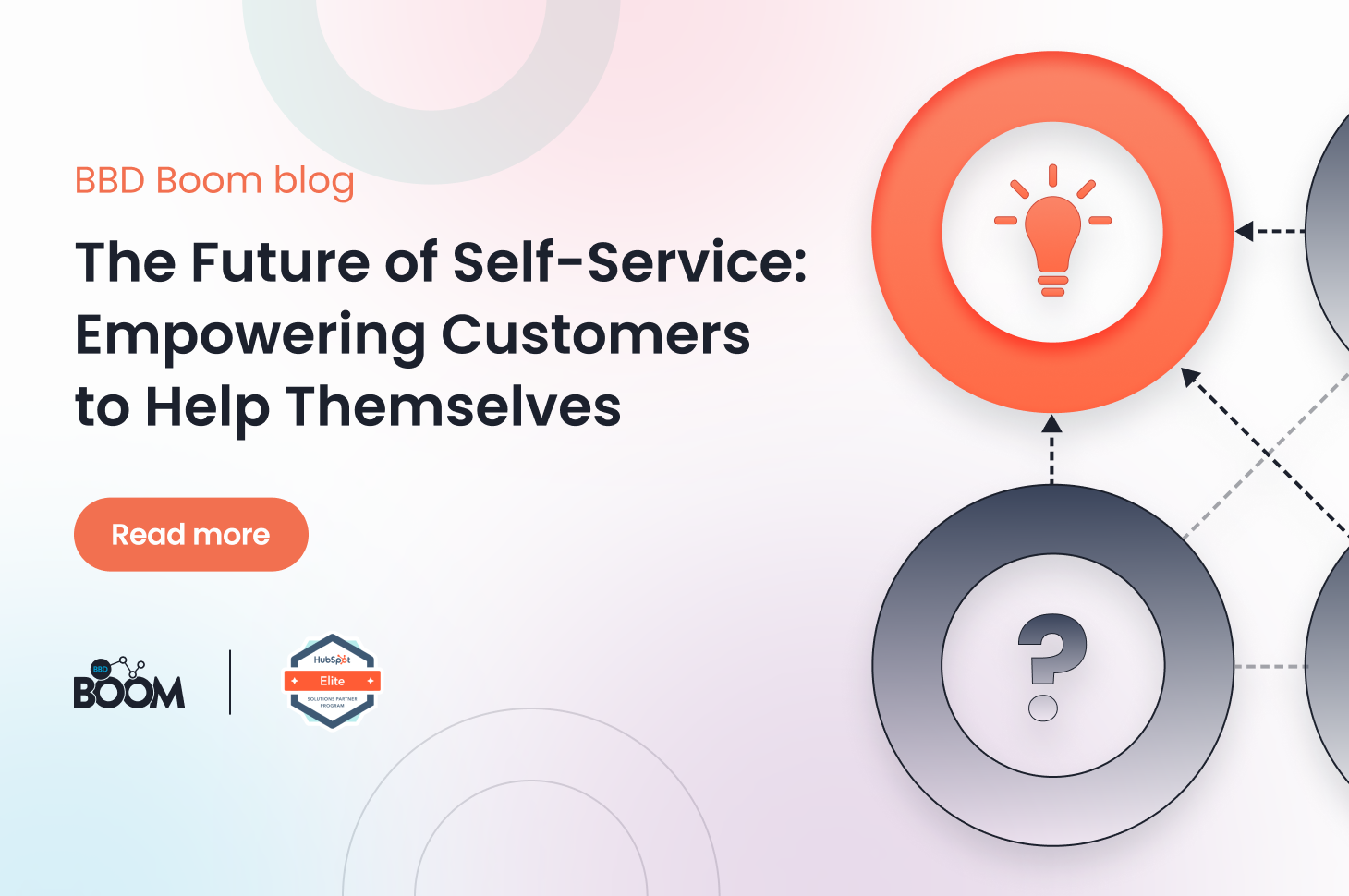Customer expectations are changing - fast. Today’s buyers want quick, easy solutions without having to jump through hoops. In this blog, we’ll explore why self-service is becoming a must-have, the benefits it brings for businesses and share practical tips to help you get started.
Why Self-Service is the Future
Today’s customers want fast, easy solutions - and they’re not willing to wait around for them. Sitting in queues or being bounced from one department to another? No thanks. In fact, 73% of customers say the best thing a company can do is simply value their time. Speed and efficiency aren’t nice-to-haves anymore, they’re expected.
The way we, as consumers, interact with businesses has completely changed. Thanks to search engines, apps and smart devices, people are used to finding answers themselves, right when they need them. Self-service options like knowledge bases, chatbots and online portals make this even easier, giving customers the freedom to sort things out on their own.
And here’s the thing: self-service is only going to get smarter from here. Businesses that are leaning into it now aren’t just keeping up with customer expectations, they’re setting themselves up for long-term success. In a world where people crave independence and instant results, making it easy for customers to help themselves is one of the best moves a company can make.
The Benefits of Self-Service for Businesses
Self-service isn’t just great for customers - it’s a game-changer for businesses too. When customers can find answers on their own, it takes a huge load off support teams. That means fewer repetitive questions, faster response times for more complex issues, and a better experience for everyone involved.
It’s also a serious money-saver. By 2029, companies can reduce customer service costs by up to 30% by implementing self-service channels. Think about it - fewer calls and emails to handle means you can scale your support without scaling your team (or your costs).
Beyond the numbers, there’s a bigger win: happier customers. People love getting what they need quickly and easily. When you make that possible, you’re not just solving problems, you’re building trust and loyalty. And in today’s competitive market, that’s worth its weight in gold.
Put simply, self-service helps businesses work smarter, not harder. It’s efficient, cost-effective and it keeps customers coming back. What’s not to love?
HubSpot Tools That Power Self-Service
Scaling a business comes with its challenges, but making support simple shouldn’t be one of them. HubSpot’s self-service tools are built to make life easier - for your team and your customers. By cutting down wait times, reducing repetitive tasks, and keeping things running smoothly behind the scenes, these tools help you deliver a better experience without adding extra strain.
Knowledge Base
HubSpot’s Knowledge Base tool enables businesses to build a searchable library of help articles, FAQs, and how-to guides. It integrates directly with your website or customer portal, allowing users to easily find answers without contacting support.
Key Benefits
-
Reduced Support Load: Customers resolve issues independently, freeing up your support team for more complex queries.
-
Improved SEO: Public knowledge base articles boost your organic search presence.
-
Enhanced Customer Experience: Immediate access to information builds trust and improves satisfaction.
-
Customisable Design: Tailor the look and feel to match your brand, ensuring a seamless experience.

Customer Portal
The Customer Portal gives your clients a secure, private space where they can view, manage, and respond to their support tickets. Customers can track the progress of their queries without the need to reach out to support teams repeatedly.
Key Benefits
-
Transparency: Customers can monitor ticket status and history in real-time.
-
Empowerment: Users feel more in control of their service interactions.
-
Efficiency: Reduces back-and-forth emails and calls, improving response times.
AI Chatbot
HubSpot’s AI Chatbot automates customer conversations by handling common questions and routing complex issues to the right teams. Powered by machine learning, the bot can escalate conversations, collect key information and even personalise responses based on CRM data.
Key Benefits
-
24/7 Availability: Assist customers outside of regular business hours.
-
Lead Qualification: Gather and qualify leads automatically during conversations.
-
Seamless Handoff: When necessary, bots can seamlessly transfer the conversation to a human agent.

Live Chat
Live Chat provides real-time, human support through your website. It can be set up to alert specific teams or individuals when a visitor starts a conversation and can integrate with your CRM to provide context to agents before they engage.
Key Benefits
-
Instant Support: Address customer questions while they’re actively engaged on your site.
-
CRM Integration: Log conversations and capture valuable lead information automatically.
-
Personalised Conversations: Use CRM data to greet customers by name and reference previous interactions.

How to Get Started (Practical Tips)
Building an effective self-service system in HubSpot isn’t complicated - but it does take a thoughtful approach. Here’s how to get started the right way:
1. Audit Your Most Common Support Queries
Begin by digging into your support data. Review tickets, live chat logs, and customer conversations to find the most frequent questions and issues. Look for patterns: what problems come up again and again? These repeat queries are perfect candidates for self-service because they’re predictable and easy to document.
2. Prioritise Your Knowledge Base and Chatbot Flows
With your list of common queries in hand, start by creating clear, detailed knowledge base articles. Think simple, step-by-step instructions, supported by visuals or videos where helpful.
Next, design chatbot flows that guide customers to the right solution fast. Use quick replies, smart branching, and fallback options to make the chatbot feel intuitive, not frustrating.
3. Set Up Feedback Loops to Monitor Effectiveness
Launching is just the beginning. You’ll need a system to measure how well your self-service tools are working. Add feedback surveys to knowledge base articles (“Was this helpful?”), and track chatbot resolution rates, bounce rates, and customer satisfaction scores.
Real-time feedback shows you where customers are getting stuck, so you can continuously refine and improve the experience.
4. Train Your Team to Keep Content Updated and Accurate
Your knowledge base and chatbot are living resources - they need regular updates to stay useful. Set up a clear process for your team to review and refresh content on a set schedule (quarterly reviews work well). Also, encourage support reps to flag outdated information and suggest updates based on their frontline experience.
HubSpot has all the tools you need to make support effortless, for you and your customers. If you’re ready to deliver faster resolutions and boost customer satisfaction, we’d love to help you get started.
Thinking about using HubSpot for your self-service setup? Lets chat!
.png?width=877&height=508&name=bbd-boom-siloy-navy+blue-logo%20(1).png)
.png)

.jpg)

-1.png?width=50&name=Webinar%20Speakers%20(1)-1.png)



-1.png?width=90&name=Webinar%20Speakers%20(1)-1.png)
-2.jpg?width=352&name=Untitled%20design%20(21)-2.jpg)

-1.png?width=352&name=Untitled%20design%20(52)-1.png)